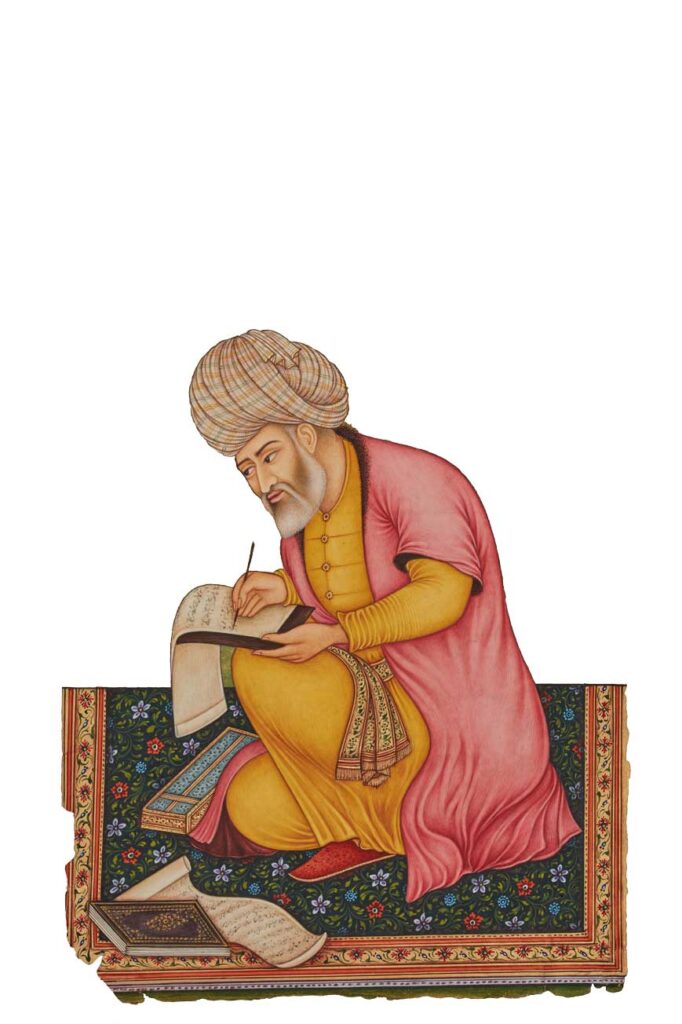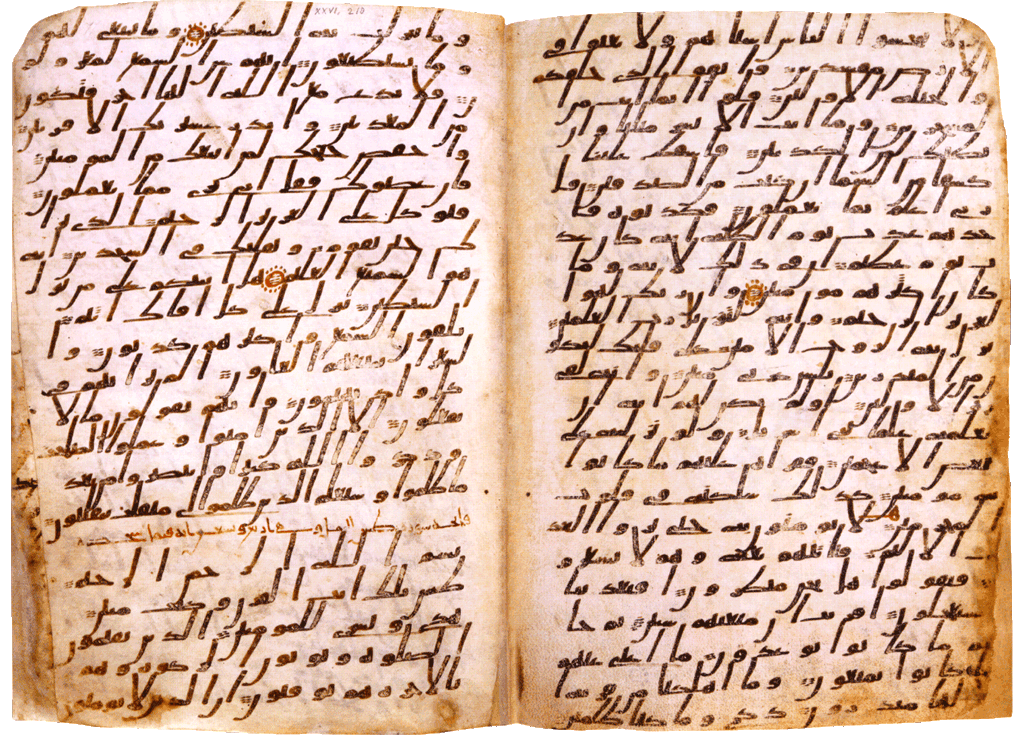1. The first scribes of the Qur’an
Posterity has remembered only a dozen scribes who wrote down the revelation as it was transmitted to the Prophet Muhammad. These were Abân b. Sa’îd, (d. 632), ‘Alâ b. al-Hadramî (d. 632/3 or 641/2), b. Alî b. Abî Tâlib (c. 600-661), Hanzala b. Abî Rabî'(m.670/1), Jâbir b. Sa’îd b. al-‘As (606-697), Mu’âwiya b. Abî Sufiân (602-680), Ubayy b. Ka’b (d.649), Uthmân b. ‘Affân (574-656) and Zayd b. Thabît (611-665). Women calligraphers played a key role in the learning and transmission of writing and knowledge. They were encouraged by the Prophet to study, like the Meccan Al-Shifa bint ‘Abdullah al-Qurashiyyah al-Adawiya (d. 640), who is reported to have taught writing to Hafsa (605-661), wife of the Prophet.

Miniature of a scribe
18th – 19th century
ADLANIA Foundation, Iconographies, ICO-404

Arabo-Byzantine bronze coin from the Umayyad period
7th – 8th century
Diameter: 2,25 cm
ADLANIA Foundation, Objects, OBJ-1662

Sassanid Arab coin (dirham) from the Umayyad period in the name of Ubayd Allah ibn Ziyâd
7th century
Diameter: 3 cm
ADLANIA Foundation, Objects, OBJ-2295
2. Calligraphic style
Hijâzî (7th century)
Born at the beginning of the 7th century, the Hijazi style, whose name is inspired by the script used in the region of Mecca and Medina (Hijâz), is characterized by its angular, wide, widely-spaced forms, with a certain irregularity in the size and shape of its slender letters whose vertical shafts lean to the right.
For several decades, the Qur’an remained the only Arabic book copied in this style, according to the famous author Muhammad ibn Ishâq Ibn al-Nadîm (d. 990), who described the first script used in Hijâz in his catalog, “Al-Fihrist”.

Page from a copy of the Qur’an
Suras XXVI 184-227 and XXVII 1-4
7th – 8th centuries
Parchment, 31,5 x 21,5 cm
Style: Hijâzî
British Library, OR 2165